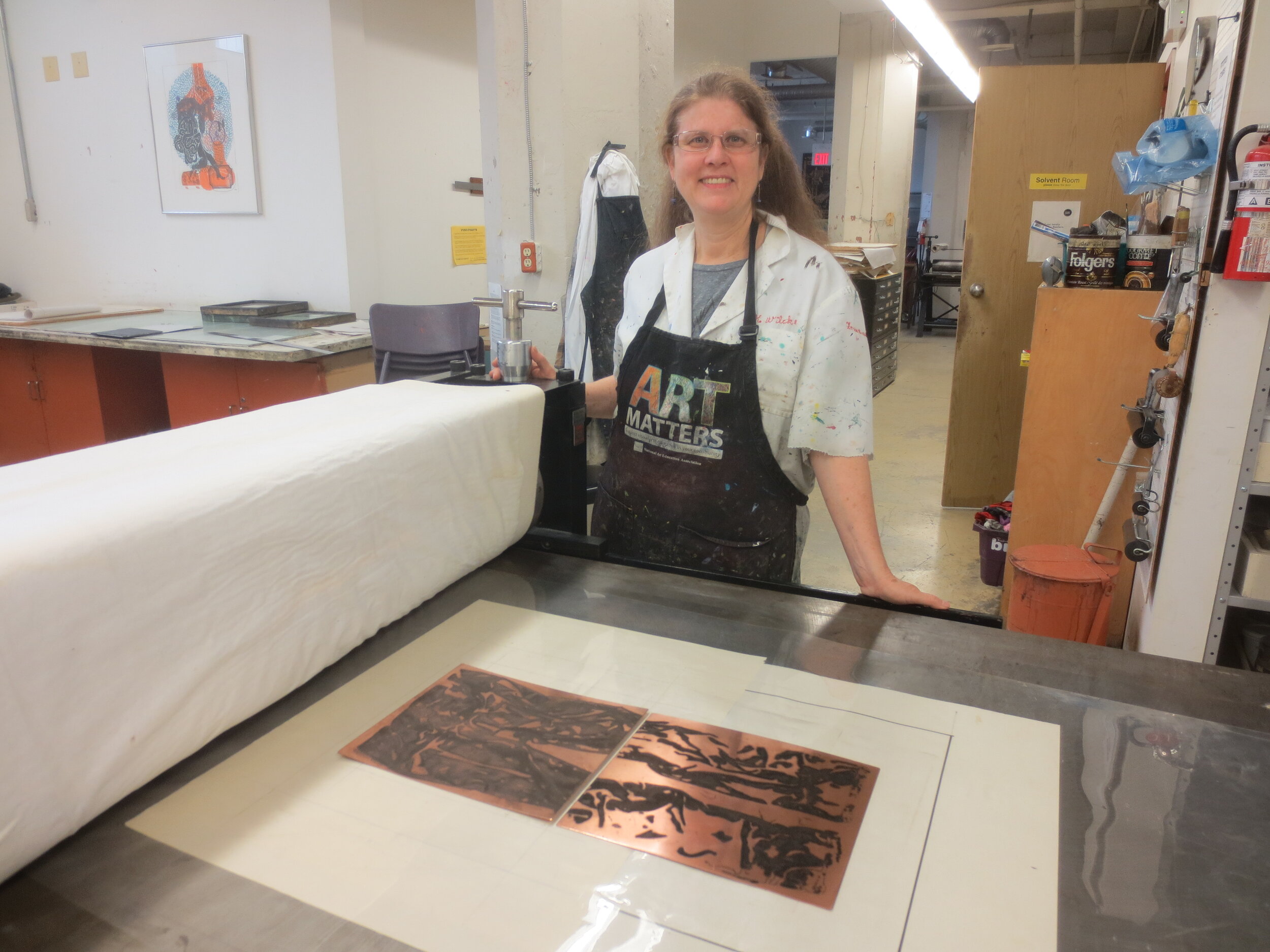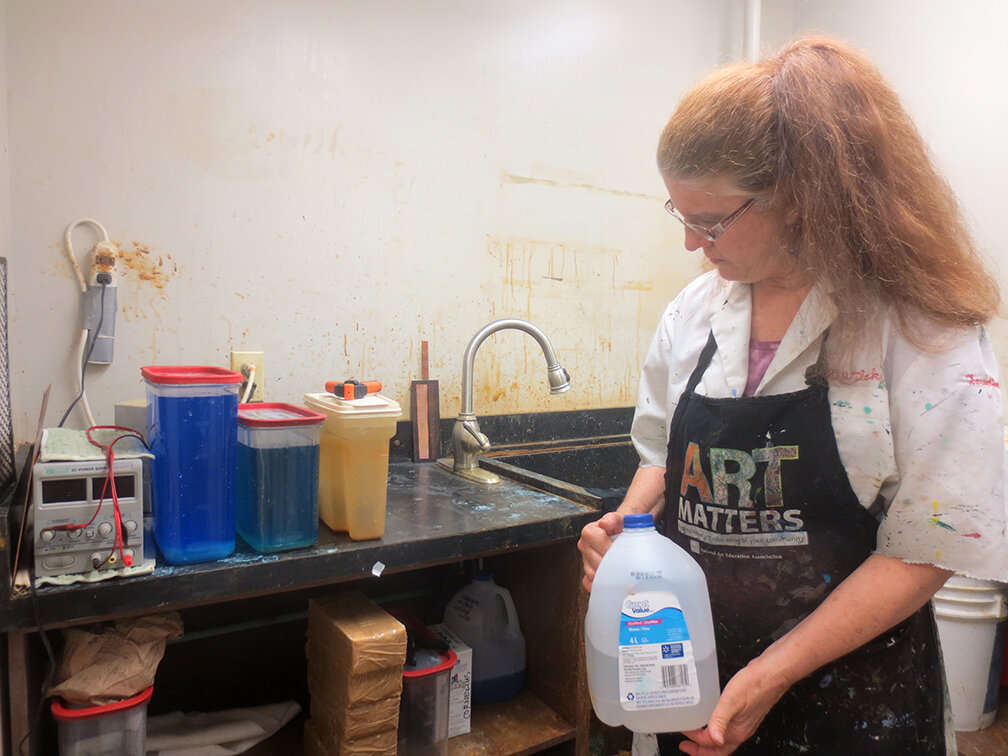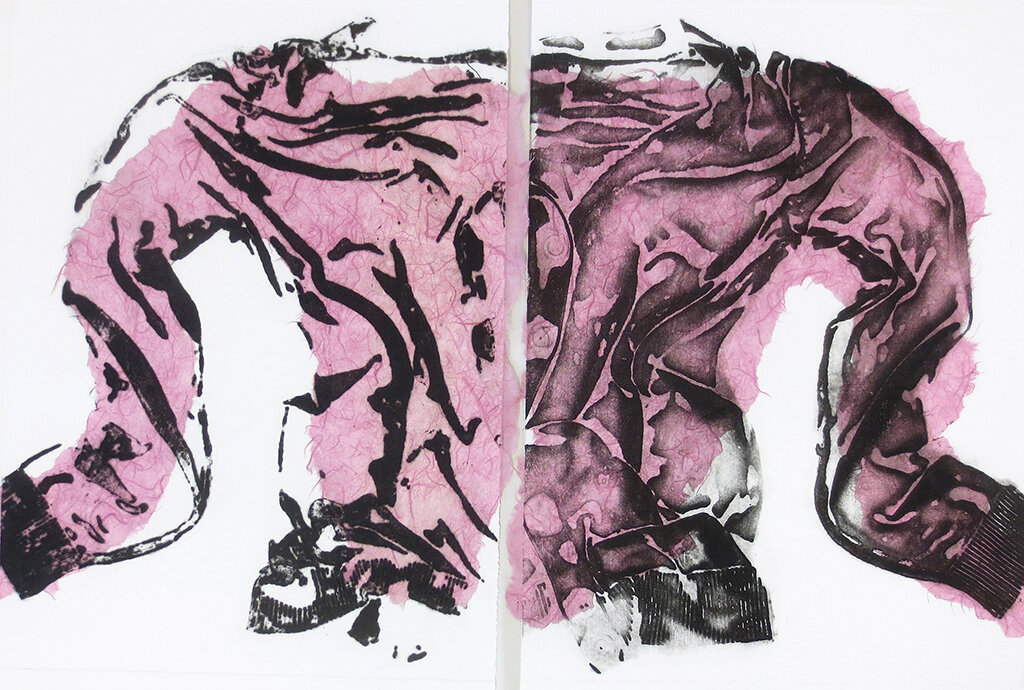Karen Cornelius
Martha Street Studio Residency
Residency
Martha Street Studio 2016
Self Directed Residency in Winnipeg
I received an individual arts grant from the Winnipeg Art Council and one from the Manitoba Arts Council to support my continued exploration into electro-etching. I choose to work at Martha Street Studio in Winnipeg creating a self-directed residency rather than work in isolation in my personal studio so that members working along side me in the studio could share in some of my experimentation.
Electro-etching was developed by Thomas Spencer in the 19th century. We can only speculate as to why electro-etching wasn’t adopted as an intaglio option by the printmaking community. It is possible that there was a hesitancy to mix water and electricity and without the concerns about health and safety there was little incentive to learn a new way of working.
Initially my exploration into electro-etching was focused on replicating traditional etched lines and aquatint on copper, zinc and iron. I submersed two plates of the same metal in parallel 6-10 cm apart in an electrolyte. I connected the two plates to the two terminals of a direct current power supply and applied a very low voltage of electricity.
The electrolyte in which the plates are immersed contains positive metal ions and negative sulfate ions. When the current flows positive metal ions adhere to the cathode plate and negative sulfate ions are attracted to the bare areas of the anode plate reacting with the metal surface oxidizing and eroding it. The result is a bite that is comparable with that of acid etching albeit with some useful differences, one of which is a gratuitous electrotint.
Once I was satisfied that electro-etching could achieve quality results I began to extend my research and experimentation in the service of my ideas focused on belonging and displacement.
The electro-etching process of metal displacement became central to the translation of my childhood experience of involuntary evacuation from a volatile, dangerous political situation. I employed a semi-dry process in which I sandwiched sulfate soaked clothing reminiscent of the clothing my mother likely packed for me when we had to flee, between two copper plates running a low voltage of direct current between the two.
The electrical current galvanizes and corrodes a slightly out of focus photographic like translation of the front and the back of the clothing, recording the physical outside and emotional inside, marking uncertainty, unpredictability, fear and trauma. Clothing is the body’s second skin, it protects, defines and obscures, standing between what is revealed and what is hidden. The clothing is sacrificed in the electro-etching process, stained, scarred with copper fragments becoming trapped in the weave of the fabric, marked by the journey.
I intentionally use electro-etching to effect both the negative and positive plates simultaneously displacing metal in an exploration of the fragile nature of memory which at times are inconsistent and even inaccurate effected by time, disease and accident.
I am inspired by Canadian printmaker, Colin Lyons, who has cleverly extended the manual, mechanical and chemical processes of traditional printmaking matching zinc and copper plates, which create a small electrical charge, in monumental installations producing a sufficient current to electrochemically alter the plates.
Alfonso Crujera has published the Electro-etching handbook with extensive information on electro-etching. I used this resource to establish my first rudimentary electro-etching system and subsequently completed a residency with Crujera, in the Canary Islands, which provided an excellent foundation of electro-etching knowledge.
I hope more printmakers will begin to experiment with electro-etching publishing their research and discoveries to further this exciting rediscovered printmaking option.























